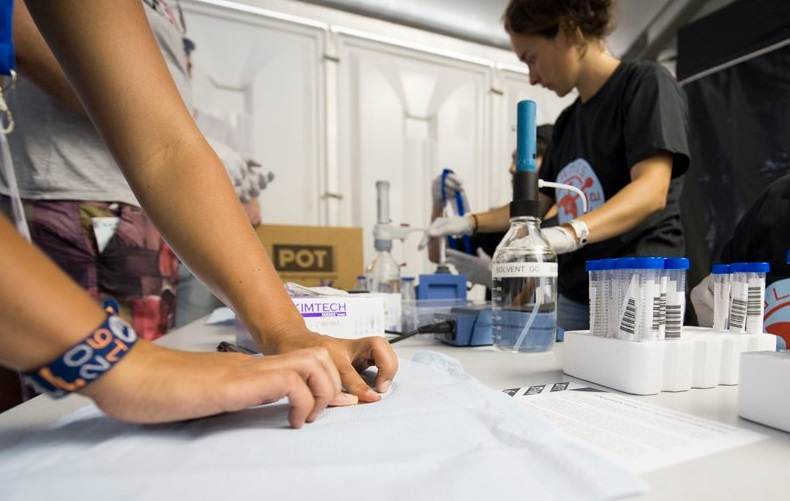Festival visitors provide data to NFI
Festival visitors provided forensic data to forensic researchers of the Netherlands Forensic Institute (NFI) during Lowlands Festival (August 19th, 20th and 21st). Together with several partners, the NFI carried out two experiments, in which a total of 600 festival visitors participated.
This was the second time that the NFI called in the help of citizens to collect large quantities of data. Last year, the NFI also performed experiments during Lowlands. This is one of the best-known festivals in the Netherlands which attracts approximately 55,000 visitors every year. The three-day festival features a scientific programme component, Lowlands Science, during which scientific research can be conducted.

Murdered with a pillow?
The researchers of the NFI, Delft University of Technology, the Amsterdam University of Applied Sciences, and the Police Academy cooperated in the research conducted this year. They wanted to know whether someone committing a murder leaves fingerprints in different places from someone changing a pillow case. Another question to which they wanted an answer was, to which extent the chemical compositions of fingerprints differ among persons.
The participants were first given the assignment to put a pillow in a pillowcase. They were subsequently meant to ‘smother’ a doll with a different pillow. The researchers measured how much force the ‘perpetrators’ used in the course of ‘killing’ their ‘victims’.
During both acts, the participants were administered special UV paint on their fingers. In a dark room, the researchers subsequently examined with a forensic UV lamp and automated image processing whether and how the locations of the fingerprints left behind differed from each other. They also examined whether a relationship existed between the positions of the fingerprints found and the force that was used during ‘the murder’.
You sweat what you eat
The second experiment was about the chemical compositions of fingerprints. For this purpose, the participants swiped their fingers over a piece of film, both with their hands washed and unwashed. The participants also completed a questionnaire about themselves and their diet and way of living. The researchers will analyse whether these aspects, gender, and age of the participants can be deduced from the chemical composition of the swipe of their fingers.
Analysing data
The two experiments provided many data. These data will be analysed in the next few months. The researchers will use these data to examine whether the location of the fingerprints and their chemical composition can be used in forensic practice.
The experiments during Lowlands 2015 were aimed at the question where perpetrators leave DNA evidence behind while making a knot and moving a body. These experiments also produced many data and provide insight into what the most favourable locations are for DNA sampling.